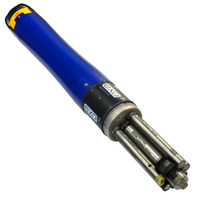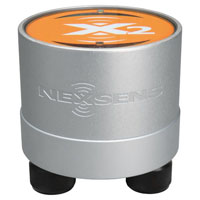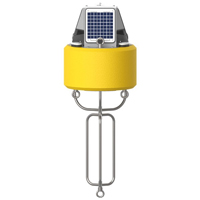 The Center for Human GeoEnvironmental Studies (CHNGES) at Western Kentucky University (WKU) works with organizations to develop environmental monitoring solutions. Dr. Jason Polk started CHNGES at WKU after recognizing a need in his industry to help create and manage long-standing environmental monitoring programs.
The Center for Human GeoEnvironmental Studies (CHNGES) at Western Kentucky University (WKU) works with organizations to develop environmental monitoring solutions. Dr. Jason Polk started CHNGES at WKU after recognizing a need in his industry to help create and manage long-standing environmental monitoring programs.
Polk specializes in water resources and climate research, karst environments, and reconstruction of the environment. CHNGES focuses on understanding human and societal interactions as well as various environmental issues through monitoring and research. Applied research and working with communities have been the basis for all of Polk’s monitoring solutions over the years.
He explains, “I can study glaciers in Iceland, I can study caves in Belize, I can study, you know, groundwater right here in Kentucky, we’ve done work with ag communities and impacts in Vietnam—it’s been really interesting and neat to be able to do work in all these different countries in these areas and see that linkage and that thread of applied research.”
Challenges: Innovation and Long-Term Monitoring Solutions for Unique Applications
 Polk has spent his career curating solutions for environmental monitoring projects, one of which has been helping the City of Bowling Green, Kentucky, construct a network of environmental monitoring systems. This specific project presents a unique challenge as the city has a complex groundwater system in a fast-growing environment where the rural meets urban.
Polk has spent his career curating solutions for environmental monitoring projects, one of which has been helping the City of Bowling Green, Kentucky, construct a network of environmental monitoring systems. This specific project presents a unique challenge as the city has a complex groundwater system in a fast-growing environment where the rural meets urban.
Creating a solution that meets the monitoring needs of the system takes time—as does installation and maintenance. Polk is tasked with doing more than just choosing instrumentation—he must also consider the capabilities of the city to manage these systems in partnership with CHNGES. Working with Bowling Green’s Environmental Manager, Matt Powell, they set goals to expand the network strategically and integrate the data for the public.
Solution: Using Applied Research to Develop Systems Over Time
In order to meet these challenges, networks are initiated with a single comprehensive system and upgraded to include newer equipment or additional monitoring sites in order to meet data needs. In the case of Bowling Green, the initial site was a YSI EXO 2 deployed in 2013, followed by upgrades or additions each year for the last decade.
Because the city has such unique environmental conditions, multiple stations can be used to collect data that paints a more comprehensive picture of conditions.  As of the end of 2023, the Bowling Green network is comprised of ten YSI EXO2s, seven NexSens X2 data loggers, and a NexSens CB-150 data buoy.
As of the end of 2023, the Bowling Green network is comprised of ten YSI EXO2s, seven NexSens X2 data loggers, and a NexSens CB-150 data buoy.
Most of the systems monitor pH, DO, specific conductivity, and turbidity, though other probes have been deployed for additional research projects. Data are collected every 10 minutes and pushed to the cloud, where it is viewable on WQData LIVE. In addition, the data are integrated into a public-facing website (www.UNDERBGKY.org), which includes outreach and education materials about the partnership and the local environment.
 Benefits: Forming Partnerships and Supporting Future Monitoring Solutions with Applied Research
Benefits: Forming Partnerships and Supporting Future Monitoring Solutions with Applied Research
Data from the network can be used as indicators for various environmental conditions and local research efforts. To date, numerous water quality issues, including a gasoline leak, detergent spill, and several other contamination events, have been remediated in partnership with the City of Bowling Green, thanks in part to information from the real-time network. The network has also been used for more than two dozen student research projects examining water quality, development, and land use issues, among others.
“Thinking about how we tie these together, so that we can continue to do research, and we can have experience—we can use these data for all different types of things! It’s also great to have sort of instantaneous real time water quality data to monitor contamination issues, or flooding issues, or whatever the case may be,” elaborates Polk.
The network serves as a long-term solution for the region, even if data needs change. These systems can be modified to meet these new needs. Ultimately, the initiative creates an extensive real-time monitoring network using the best technology.
 The network should also serve different purposes and can be leveraged to get funds and grants, engage students, and help solve problems. Data from the system is public-facing, with the intention of being available for student research, resource managers, and any resident interested in learning more about local conditions.
The network should also serve different purposes and can be leveraged to get funds and grants, engage students, and help solve problems. Data from the system is public-facing, with the intention of being available for student research, resource managers, and any resident interested in learning more about local conditions.
In addition, it creates a synergistic partnership between CHNGES and the City of Bowling Green, which has led to numerous positive outcomes, including being named a “Model Practice” by the American Public Works Association and many student internship and training opportunities.
The Bottom Line
Ultimately, Polk hopes to develop a more timeless network that will work into the future and can be transferred to different environments and projects.
“I love the fact that it’s already happened several places. I’ve had several students who’ve moved into positions or transitioned into careers as consultants or with city, county, or state government, and have immediately taken these skills and been able to use them and translate them into helping those communities start the same type of network and monitoring and water quality data collection,” states Polk.
He further elaborated, “Our partnership with the City, thanks to their proactive attitude, is a great example for how working together to establish these types of monitoring solutions provides multiple benefits for all involved, particularly the community and its environmental resources.”
Equipment
The YSI EXO represents the next generation of water quality instruments from YSI. The EXO2 sonde includes six sensor ports and a central anti-fouling wiper option.
The NexSens X2 Environmental Data Logger offers the latest in real-time monitoring technology with wireless communication, large plug-and-play sensor library, and ultra-low power consumption.
The NexSens CB-150 Data Buoy is designed for deployment in lakes, rivers, coastal waters, harbors, estuaries and other freshwater or marine environments.
WQData LIVE is a web-based project management service that allows users 24/7 instant access to data collected from remote telemetry systems.





